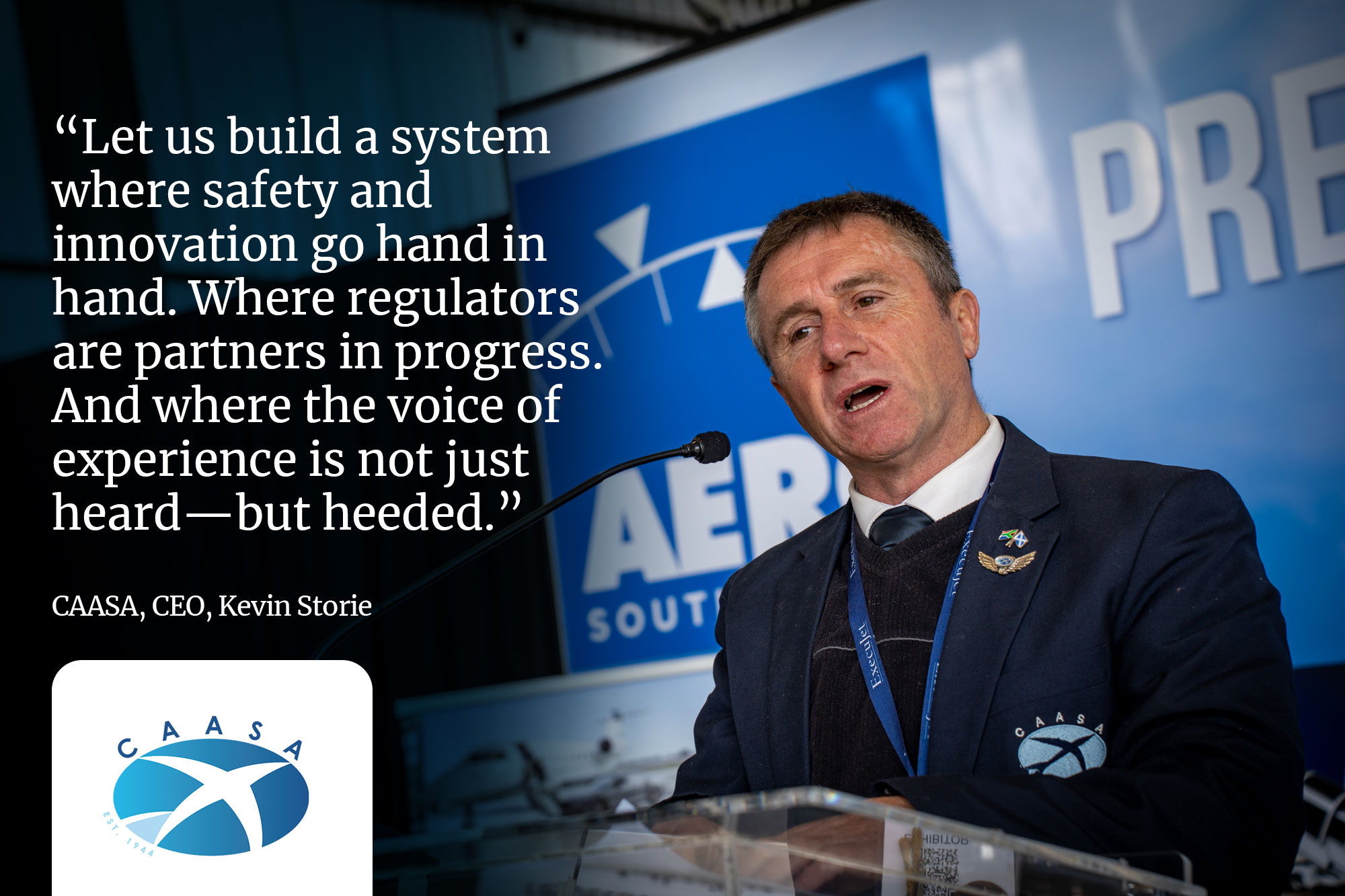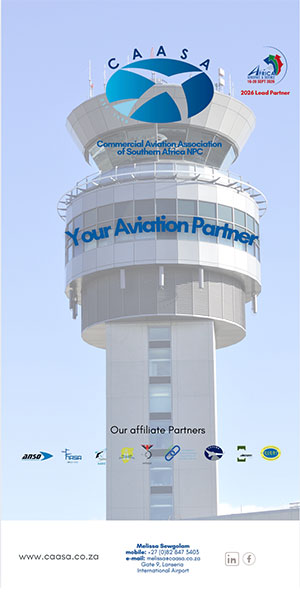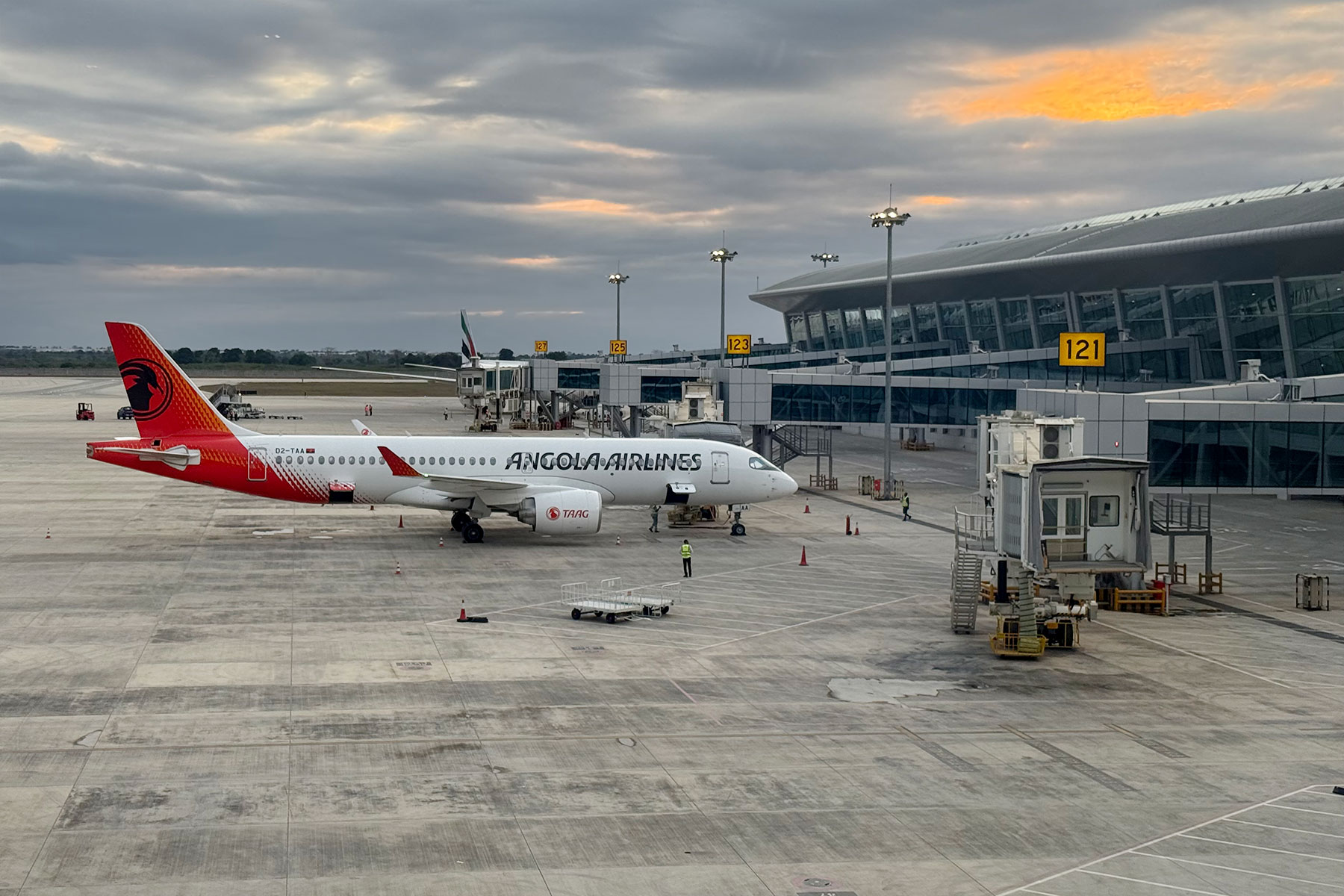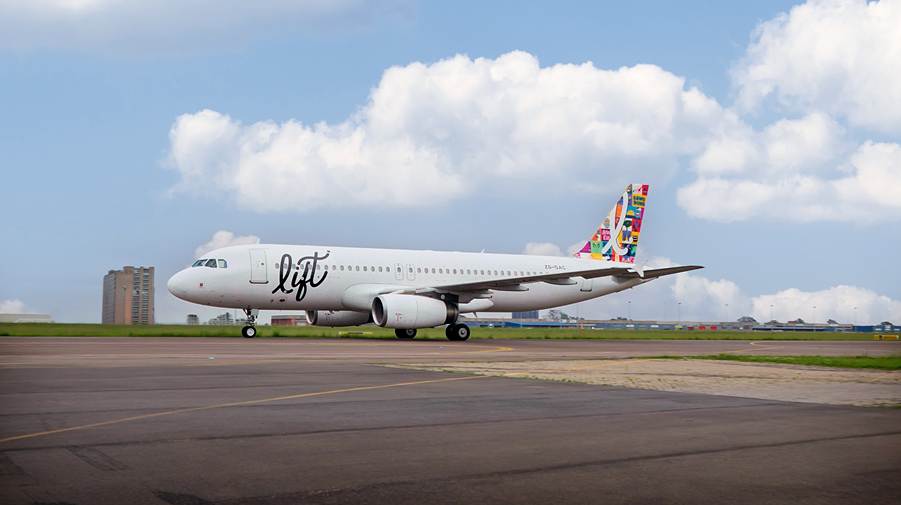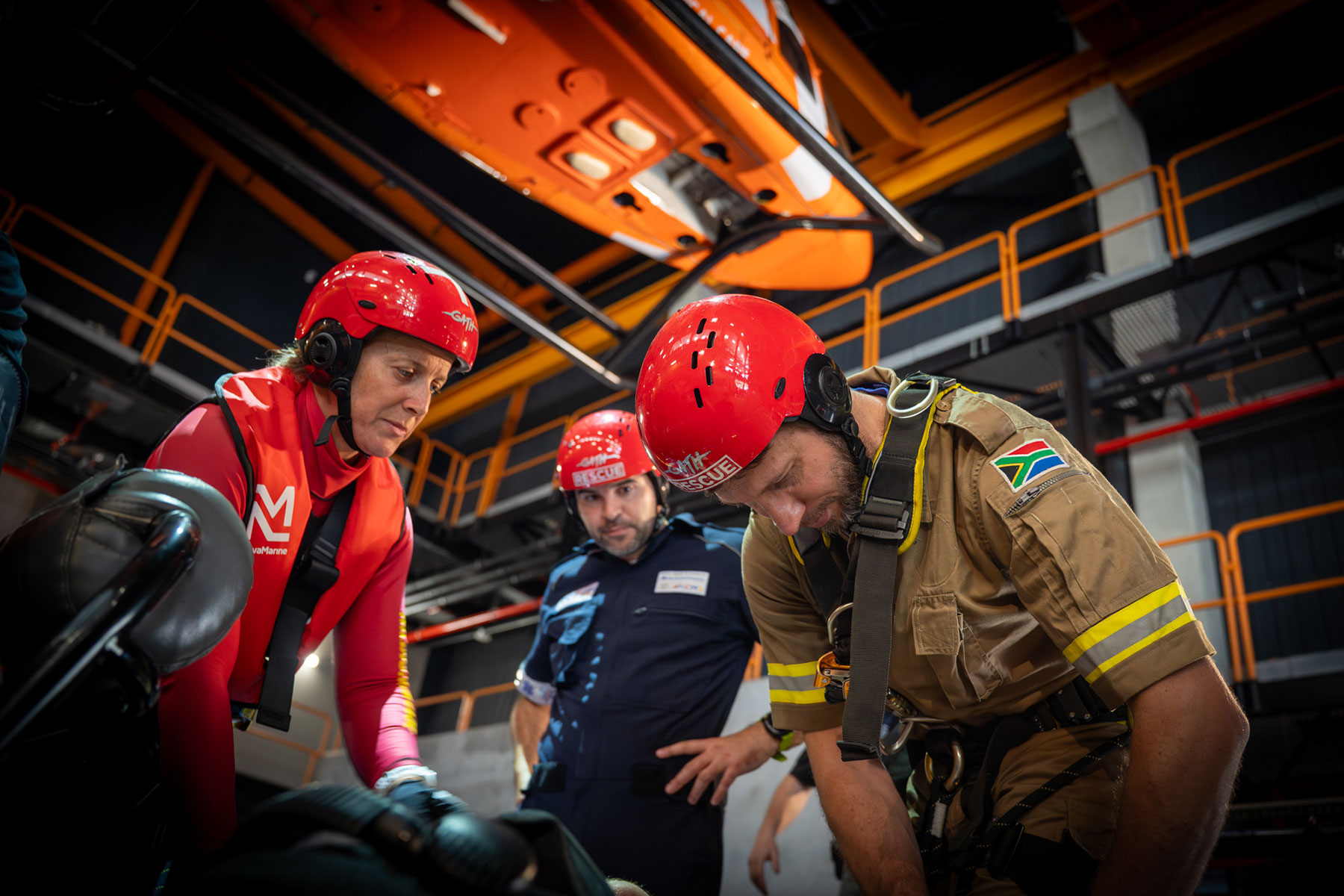Insights from CAASA CEO Kevin Storie’s speech at the AFBAA Safety and Training Workshop, held alongside the Aero SA exhibition — Southern Africa’s premier event for the general aviation industry.
The Regulator’s Role in Aviation Safety: Striking the Right Balance
Kevin Storie, CEO of the Commercial Aviation Association of Southern Africa (CAASA), delivered a speech at the recent AFBAA event held during the Aero SA exhibition, addressing how regulatory practice affects safety outcomes in aviation. While safety remains the foundation of aviation trust, he warned that regulation cannot operate in isolation from economic realities, operational feasibility, and industry input.
He noted that overly cautious or siloed regulatory approaches—driven by risk aversion without proper economic analysis or practical consultation—can lead to unintended negative outcomes. These include stifling competitiveness, increasing costs, and slowing down the introduction of beneficial technologies.
One of the main issues identified was the lack of economic impact analysis. While many regulators have strong systems in place for assessing safety risks, very few apply similarly robust frameworks to understand the financial consequences of regulatory decisions. Policies might theoretically reduce risk, but if they introduce unsustainable compliance costs or drive operators out of business, the broader public interest is not well served.
Storie pointed out that regulatory cost models are often outdated and that assessments are sometimes rushed or missing altogether. The result can be overly conservative rules that affect market competitiveness, increase consumer costs, or delay the rollout of new technologies due to unclear approval pathways.
He also addressed the issue of poor consultation with the industry, noting that many rules are developed without meaningful engagement with aviation professionals—airlines, pilots, engineers, MROs, and airport operators—who have hands-on experience of how regulations are implemented in practice. He described a pattern where consultation periods are too short, documents are too technical or inaccessible, and feedback mechanisms are underused or purely procedural.
Rather than token engagement, Storie called for the co-design of regulations from the outset, with industry and regulators working side by side.
Another challenge is the failure to close feedback loops. In a modern regulatory system, data from audits, incidents, and industry feedback should drive continuous improvement. But many policies remain static, even when there is clear evidence they are not achieving the intended outcome. Effective feedback loops require ongoing surveillance, willingness to revise policies, and action on the input received.
He highlighted the underutilisation of technical expertise across the aviation sector. There is extensive knowledge available from those who have designed aircraft, operated fleets, and worked across regulatory environments. Yet, this expertise is often sidelined. Advisory committees may exist, but the extent to which they influence actual decisions remains limited.
Storie called for a shift from a model of regulating over the industry to regulating with the industry. That includes using technical committees, secondments, and transparent working groups—not only for consultation, but for co-creation.
He also spoke about regulator workforce competency, pointing out that the quality of regulation is tied directly to the qualifications and experience of regulatory personnel. Many authorities struggle to attract or retain technically skilled staff with current operational knowledge. Without this expertise, regulations risk becoming disconnected from the realities they are supposed to govern. Investment in continuous training, performance-based hiring, and industry secondments is essential.
Storie made the case for regulatory evolution—not at the expense of safety, but in support of it. A strong, competitive industry contributes to safety. An overburdened one does not. He laid out five key imperatives for effective regulation:
- Balanced, data-driven impact assessments that consider both safety and economics.
- Genuine industry consultation based on mutual respect and collaboration.
- Closed feedback loops informed by real-world outcomes.
- Full integration of industry expertise at all policy stages.
- Competent, experienced regulatory personnel with a current understanding of the systems they oversee.
Looking ahead, he stated that as aviation evolves—with trends like sustainability, automation, and increased global integration—the need for balanced, collaborative, and fit-for-purpose regulation is more pressing than ever.
